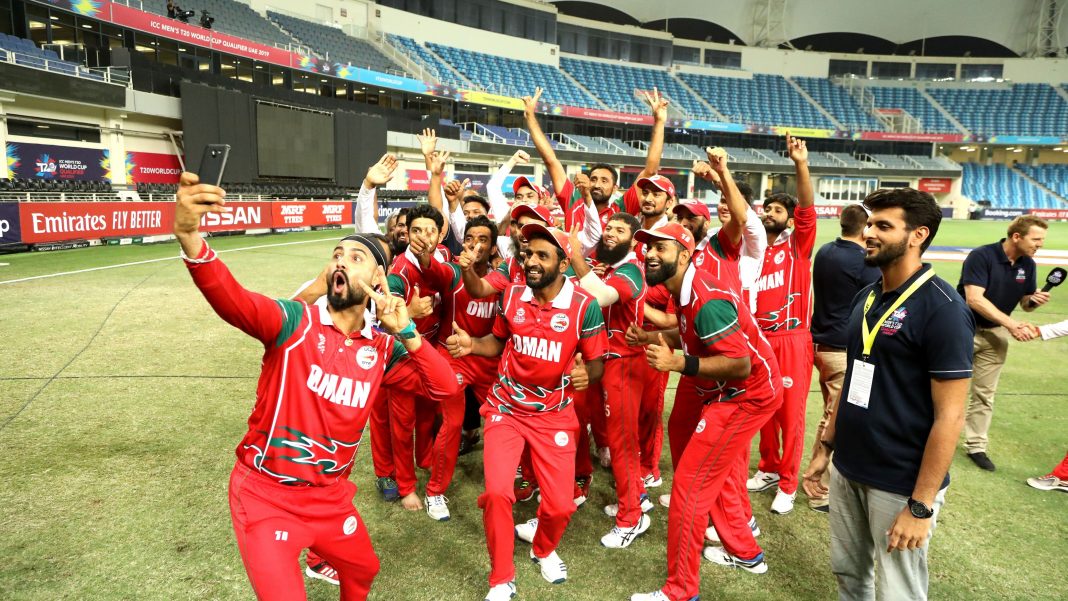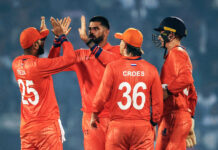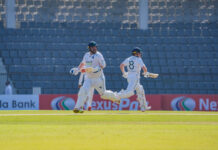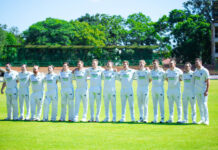Tim Brooks, A Corner of Every Foreign Field: Cricket’s Journey from English Game to Global Sport. Worthing, Sussex: Pitch Publishing, 2020. Available on Amazon.
Some books run the risk of being overtaken by events before they can be published, and Tim Brooks’s ambitious history of cricket certainly falls into that category: as an epilogue notes, with cricket at a standstill almost all over the world, this is both a strange and a curiously opportune moment to review where we are, how we came to be here, and whether this might not be an opportunity for an historic change of direction.
The proportions of Brooks’s survey are interesting: 165 of its 319 pages – almost exactly half – take us from the game’s medieval origins to the revolution initiated by Kerry Packer’s World Series Cricket in 1977, with the remainder devoted to the past 43 years.
The first part is, of course, familiar territory for any serious student of the game, and Brooks’s account does not add very much beyond a rather greater emphasis than most of his predecessors upon cricket’s development outside the six or seven original Full members.
This is a refreshing perspective, but it comes at a cost: there is no real attention given, for example, to the disruptive effects of apartheid on cricket in South Africa or to the knock-on consequences for the international game, and no mention at all of the scandal surrounding the selection of Basil D’Oliveira for England’s projected tour of South Africa in 1968-69.
These are circumstances which are not only important in themselves but vital for an understanding of the history of the ICC: the determination of England, Australia and New Zealand to go on playing Tests against South Africa after that country’s departure from the Commonwealth and consequently from the ICC created lasting animosities which fed into the shift in the balance of power which Brooks otherwise documents clearly and perceptively.
Yet Brooks merely observes that ‘In 1961 South Africa had left the Commonwealth over its apartheid policies and therefore no longer qualified for the ICC’ (p. 160), with only a passing reference to rebel tours before he leaps on to the release of Nelson Mandela in 1990.
For readers of this website it is naturally the account of the somewhat tortuous relationship between the ICC and its Associate members which forms the most interesting part of the book, and it is here that Brooks is evidently at his most comfortable.
Yet perhaps he seems a trifle too comfortable: again it may be due to the pressure of space, but his account of, for example, the 1993 struggle for control of the ICC which led to power being seized by the group led by India gives little hint of the drama involved, or of the deep-seated grievances which fuelled it.
In the corridors of the ICC, decisions like the elevation of Sri Lanka (and later Bangladesh and Zimbabwe) to Full member status had as much to do with the building of a power bloc against England, Australia and New Zealand as it did with their performances on the field or the sustainability of their infrastructure, and Brooks’s account doesn’t really do justice to the strength of the tectonic forces involved.
Brooks is at his best when he is describing the positive side of the ICC’s relationship with its Associate members: he pays just tribute to the vision of Bob Woolmer, who as High Performance Manager gave the leading Associates a framework, not least through the creation of the Intercontinental Cup, for evolving towards Full membership.
How ironic, then, that as national coach of Pakistan Woolmer should see his new charges beaten at the 2007 World Cup by Ireland, beneficiaries of the High Performance programme he had established, and how tragic that he should die the following day? It’s the stuff of Greek tragedy, but Brooks passes over it in silence.
On the plus side, he is sure-footed and balanced in his treatment of the game’s development in a wide range of countries, from Kenya and the Netherlands to Norway, the Czech Republic, Nepal and Oman, and he does acknowledge (on p. 263) the Jekyll and Hyde character of the ICC’s role in global development.
The acid test of his approach, however, comes with the sequence of events which began with the decision in 2011 to cut the 50-over World Cup to ten teams, and to restrict it, moreover, to the ten existing Full members.
In Brooks’s version this comes as an afterthought, following not only Lord Woolf’s review, its out-of-hand rejection by the BCCI, and the coup perpetrated by the Big Three of India, England and Australia, but in fact it was the first indication of a Great Betrayal, the historic reversal of the path the ICC had embarked upon fifteen years earlier.
The problem was not that the development strategy had failed, but rather that it had been too successful: Ireland’s achievements in the 2007 World Cup had ‘ruined’ the tournament from the point of view of the Indians and their media collaborators, and while the progress of Afghanistan – well described in this book – was testimony to the value of the World Cricket League, the money needed to fund the global programmes meant a fractionally smaller share of the spoils for the Full members.
All the elements of this sorry tale are present in Brooks’s account: the contrast between the glossy, high-sounding proclamations of ICC strategy documents and the grubby politics they conceal; the growing obsession with ‘markets’ at the expense of real development of the grassroots of the game; the greed of the money-men and their wilful neglect of the sport they plunder; the abysmal standards of governance highlighted by Lord Woolf and confirmed by the attempted power-grab by the Gang of Three. He may wrap all this evidence in carefully neutral language, but the facts he presents are damning.
For those wrestling with the game’s uncertain future, becoming less certain still as the book was in production, the final chapters offer both hope and a certain grim realism. ‘Cricket,’ Brooks writes,
needs to look beyond short-term profit. It has been the greed and short-termism of the full members, particularly India, that has prevented cricket from making a genuine commitment to development. Woolf recognised this and called for dramatic, fundamental reform only to see India and its allies close ranks to retain a status quo that suits them very well. In the last few years the ICC have chipped away at his recommendations as best they can but have been blocked from delivering the most significant. By far the biggest opportunity missed has been ensuring that cricket features in the Olympics.
Dare we hope that the shock of a global pandemic will bring about the change of heart which the game so sorely needs? Brooks shows that it is possible, but the story he tells, like our own experience, suggests that there are few in the top echelons of the sport who are capable of rising to the challenge.
Tim Brooks, A Corner of Every Foreign Field: Cricket’s Journey from English Game to Global Sport. Worthing, Sussex: Pitch Publishing, 2020. Available on Amazon.








I was enjoying “A corner of every foreign field” until I came upon the author’s reference to the Great Exhibition as “infamous”. That comment certainly jarred with me, and I proceed with the rest of the book wondering if an explanation for it will appear.